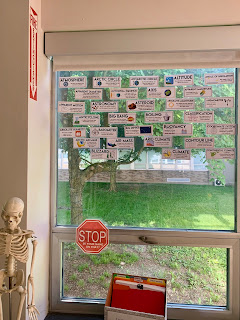Earth Science Topics
Earth Science Rocks! App
logo
1.1 Observations and Inferences
Observations
Inferences
Classification
1.2 Scientific Notation
1.3 Scientific Measurement
Length
Temperature
Time
Volume
Mass
1.4 Density
Formula
Temperature and Density
Pressure and Density
Buoyancy
1.5 Graphing
X-axis
Y-axis
Direct relationship
Indirect Relationship
Cyclic Relationship
Dynamic Equilibrium
1.6 Rate of Change
Formula
1.7 Earth’s Layers
Hydrosphere
Atmosphere
Lithosphere
Biosphere
Crust
Plastic Mantle
Stiffer Mantle
Outer Core
Inner Core
Earth Science Reference Tables
2.0 Earth’s Shape and Gravity
Oblate spheroid
Gravity
Distance and gravity relationship
2.1 Maps
Compass Points
Legend
2.2 Latitude & Longitude
Latitude
Longitude
2.3 Polaris
North Star
Polaris altitude = Latitude
2.4 Time Change
Local Time
Time Zones
Prime Meridian
3.0 Altitude
Topography
Topographic Maps
3.1 Interpreting Topographic Maps
Isolines
Contour Lines
Isotherms
Isobars
Index Contour Line
Contour Interval
Estimating Elevation
Gradient
Steep Slope
Gradual Slope
Hachure Marks
3.2 Calculating Gradient
3.3 Contour Lines
3.4 Constructing a Profile
Astronomy
Geocentric
Heliocentric
Retrograde Motion
Elliptical Orbits
Eccentricity
Orbital speed and Distance
4.2 Earth’s Motions
Rotation > Day and Night
Foucault’s Pendulum
Mean Solar Day
Sidereal Day
Revolution
Tilt of Axis > Seasons
4.3 Seasons
Tilt of Earth
4.4 Celestial Objects
Apparent Motion
Real Motion
Zenith
Horizon
Constellations move
Stars rotate around Polaris
Noon Sun
4.5 Path of the Sun
Zenith
Horizon
Solar Noon
4.6 Insolation
5.1 Solar System
Nebular Theory
Terrestrial Planets
5.2 Stars
Constellations
Light Year
Apparent Magnitude
Absolute Magnitude
5.3 Moon
Orbit
Tides
Neap Tide
5.4 Moon Phases
Waxing
Waining
Solar Eclipse
Lunar Eclipse
5.5 The Universe
Our Sun
Universe
Galaxy
The Milky Way
The Doppler effect
Red Shifts
Blue Shifts
Hubble’s law
The Big Bang Theory
6.1 Layers of the Atmosphere
Pressure Changes
Temperature Changes
6.2 Atmospheric Characteristics
Composition of the Atmosphere
Ozone
6.3 Heating of the Atmosphere
Heat
Temperature
Heat Transfer
Conduction
Convection
Radiation
6.4 Change of State
6.5 Air Pressure
Altitude
Temperature
Humidity
6.6 Relative Humidity & Dewpoint
Absolute Humidity
Relative Humidity
Saturation
Dewpoint
6.7 Relative Humidity & Dewpoint Related
Sling Psychrometer
6.8 Precipitation & Clouds
Orographic Lifting
6.9 Pressure and Wind
Low Pressure System
High Pressure System
6.10 Local Winds
Specific Heat
Sea Breeze
6.11 Global Winds
Doldrums
Trade Winds
Prevailing Westerlies
Polar Easterlies
6.12 Ocean Currents
7.1 Daily Weather
Weather vs Climate
Daily Temperature Patterns
Yearly Temperature Patterns
7.2 Air Masses
Maritime or Continental
7.3 Fronts
Cold
Warm
Stationary
Occluded
Cyclone
7.5 Interpreting Weather Maps
Isolines
7.6 Factors that Affect Climate
Latitude
Altitude
Topography
Land vs Water
Atmospheric Circulation
Geographic Position
Vegetation
7.7 Severe Storms
Thunderstorms
Nor’Easters
Hurricanes
7.8 Greenhouse Effect
8.1 Weathering
Mechanical
Frost Wedging
Root Action
Unloading
Chemical
Hydrolysis
Oxidation
8.2 Factors that affect Weathering
Time Exposed
Surface Area
Mineral Composition
8.3 Dirt
Soil Texture
Soil Composition
8.4 Erosional Depositional System - Gravity
Mass Movement
Slumps
Flows
Creep
8.5 Erosional Depositional System - Wind
Erosion
Deposition
8.8 Characteristics of a Stream
Stream Flow
Discharge
8.9 Streams - Erosion and Deposition
Reference Tables - Particle Size
Stream Profiles
Stream Landforms
9.1 Landscape Regions
Topography
Relief
Mountains
Plateaus
Plains
9.3 Permeability
Porosity
Permeability
9.4 Infiltration and Runoff
Infiltration
Runoff
Factors that Affect Groundwater
Gradient
Soil Composition
Large vs Small Particles
Sorted vs Unsorted
More Rain vs. Less Rain
9.5 Groundwater
Water Table
Groundwater Aquifer
Springs
Geysers
Well
10.1 Earth’s Interior
10.2 Continental Drift
Pangaea
The Continental Puzzle
Fossils
Rock types and Landforms
10.3 Evidence for Plate Tectonics
Paleomagnetism
Ocean Drilling
Earthquake Patterns
10.4 Plate Boundaries
Divergent Boundaries
Transform Fault Boundaries
10.5 Ocean Floor
Continental Margin
Abyssal Plain
Mid Ocean Ridge
Rift Valley
Trench
10.6 What is an Earthquake?
Focus
Faults
Seismograph
Primary Waves (P waves)
Secondary Waves (S waves)
10.8 Natural Disasters
11.1 Minerals
Inorganic
Crystalline Structures
11.2 Rock Cycle
11.3 Sedimentary Rocks
11.4 Igneous Rocks
11.5 Metamorphic Rocks
12.1 Relative Dating
Uniformitarianism
Bedrock
Out Crop
Law of Superposition
Law of Horizontality
Cross-Cutting Relationships
12.2 Absolute Dating
Absolute Age
Relative Age
Atomic Structure
Isotopes
Radioactive Decay
Half - Life
Radiometric Dating
12.3 Evolution of Life
12.4 How to Correlate Rocks
Fossil evidence
Index Fossils
Key Beds
Earth Science Reference Tables

































































































Comments
Post a Comment